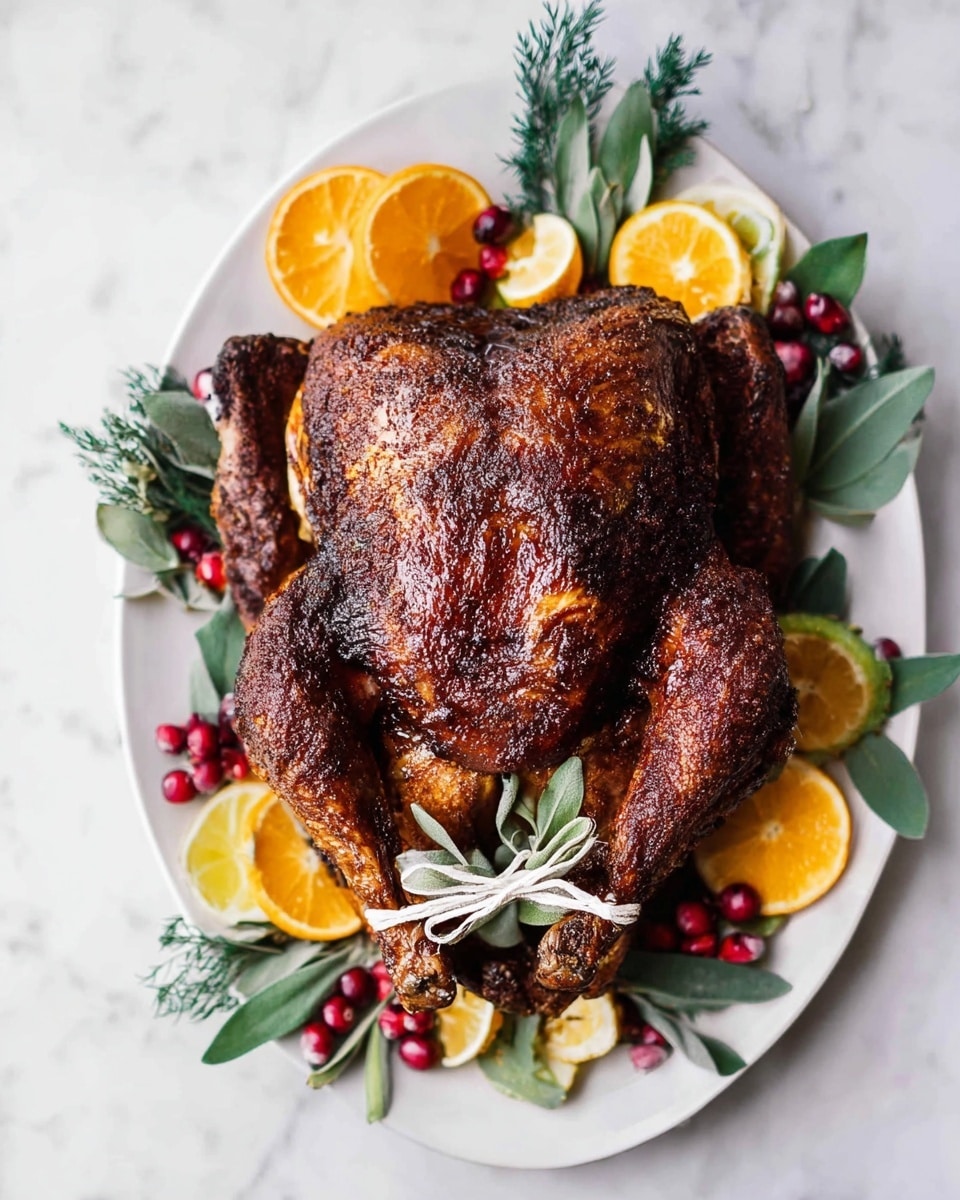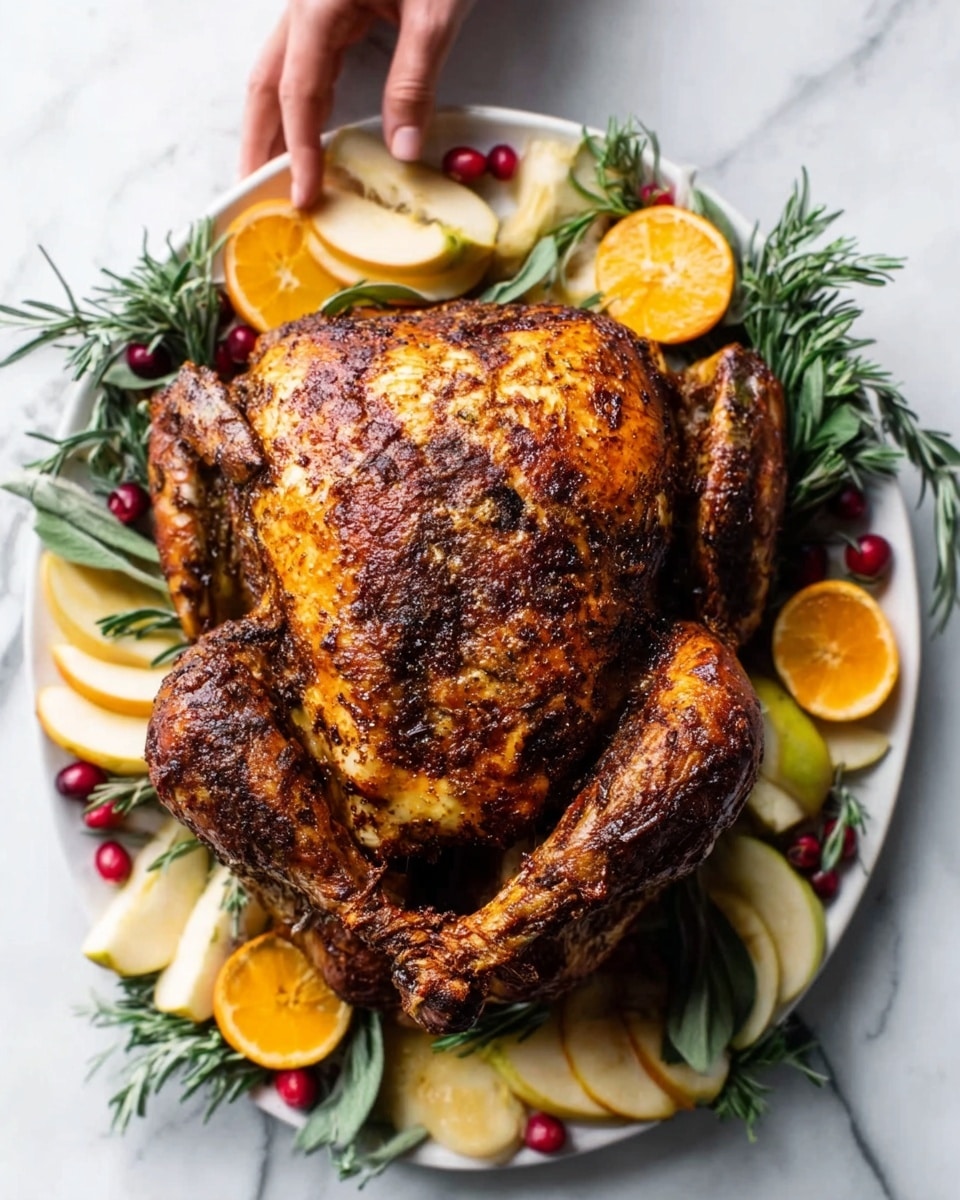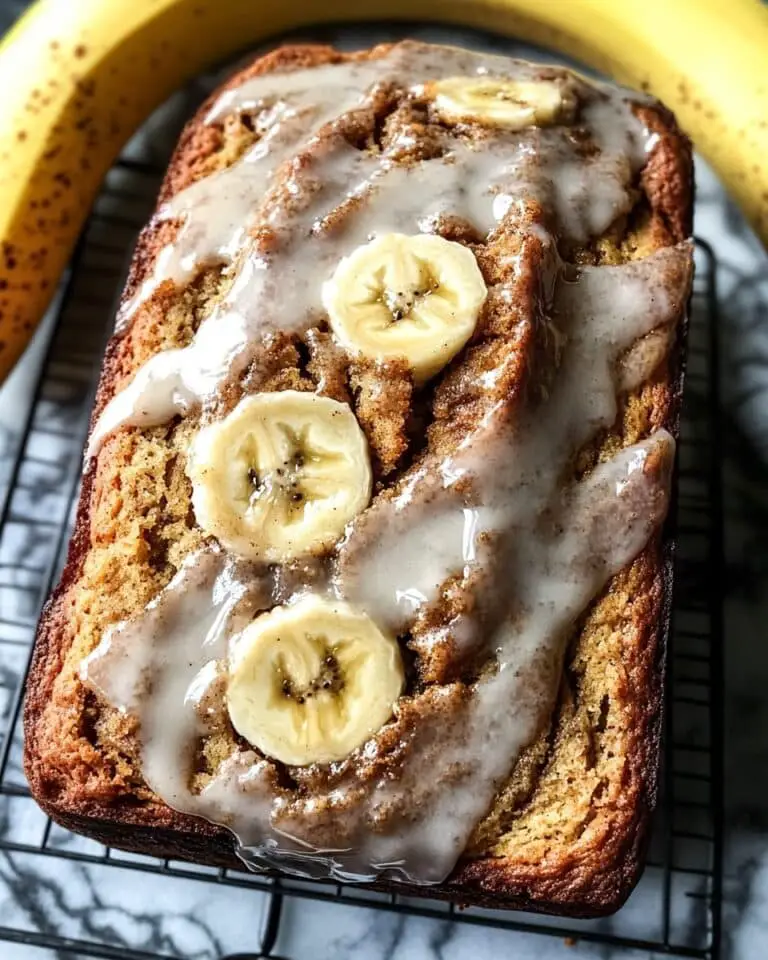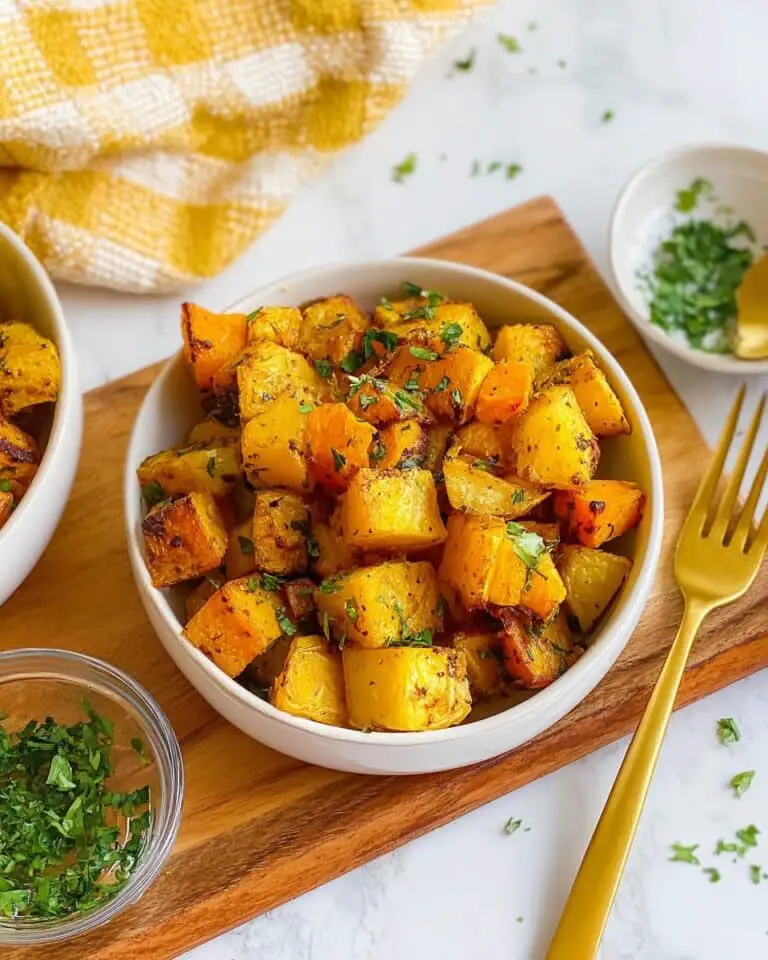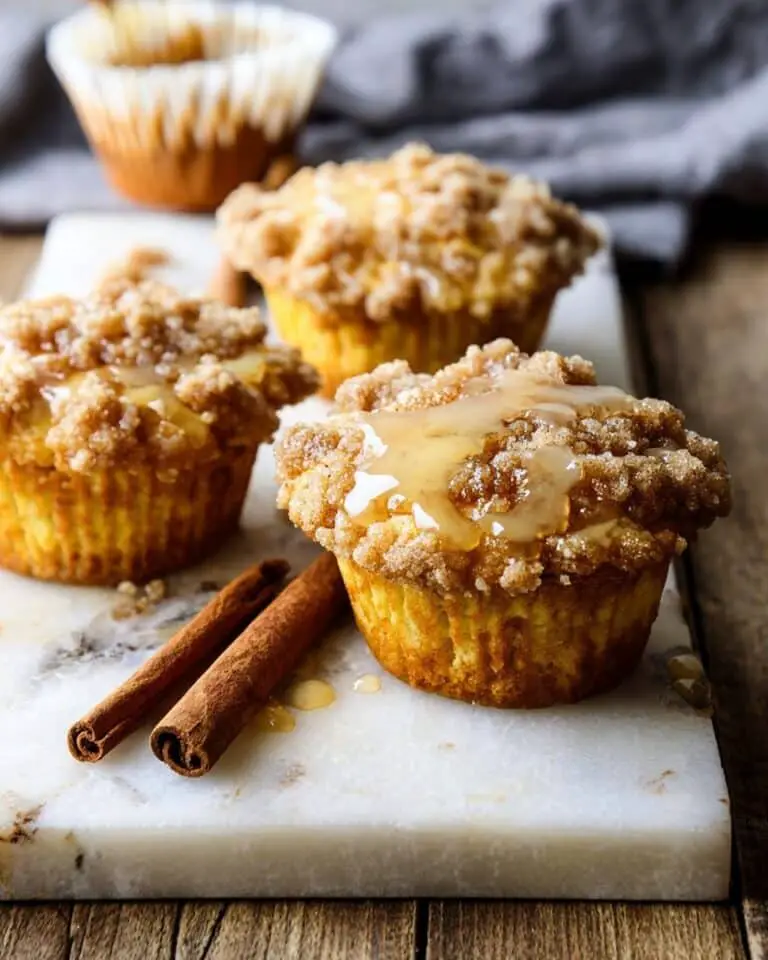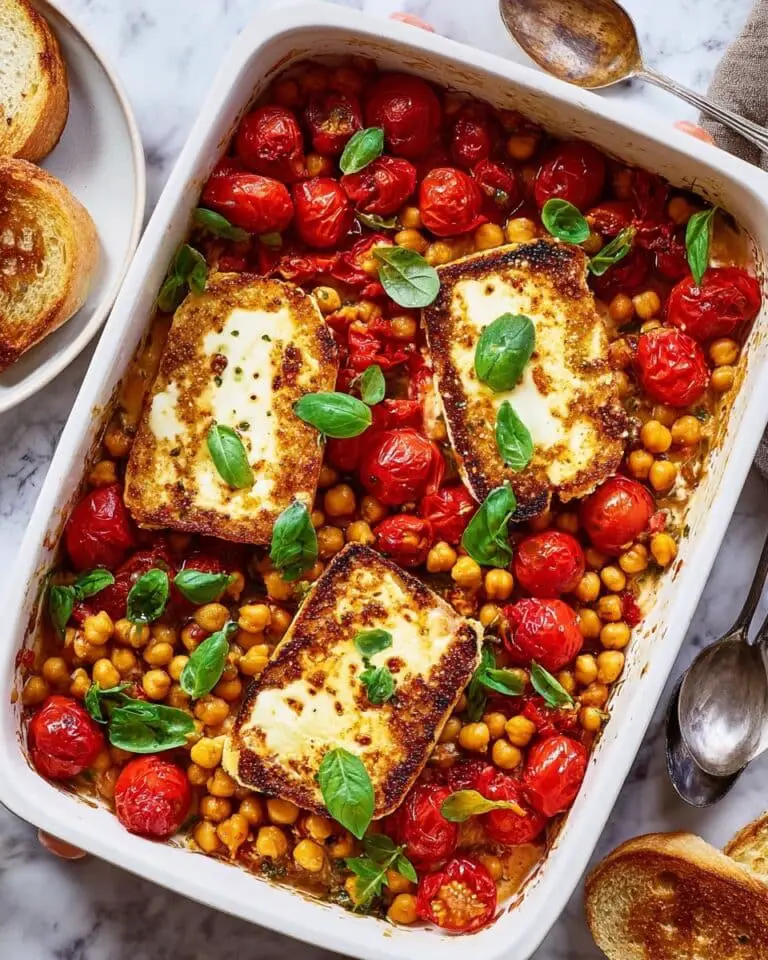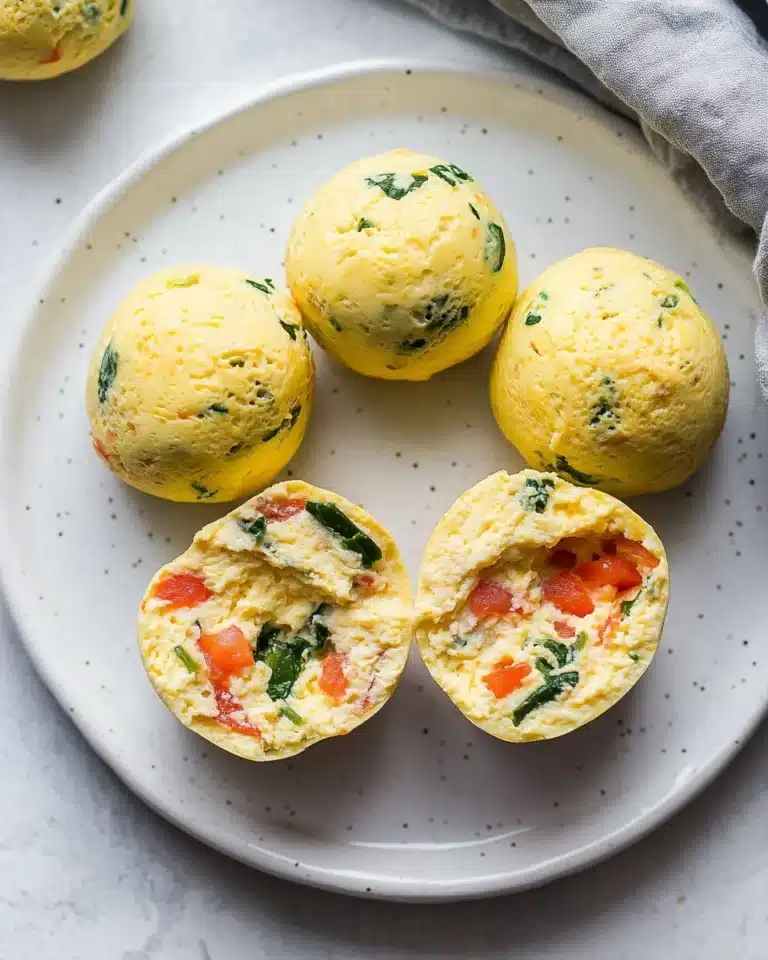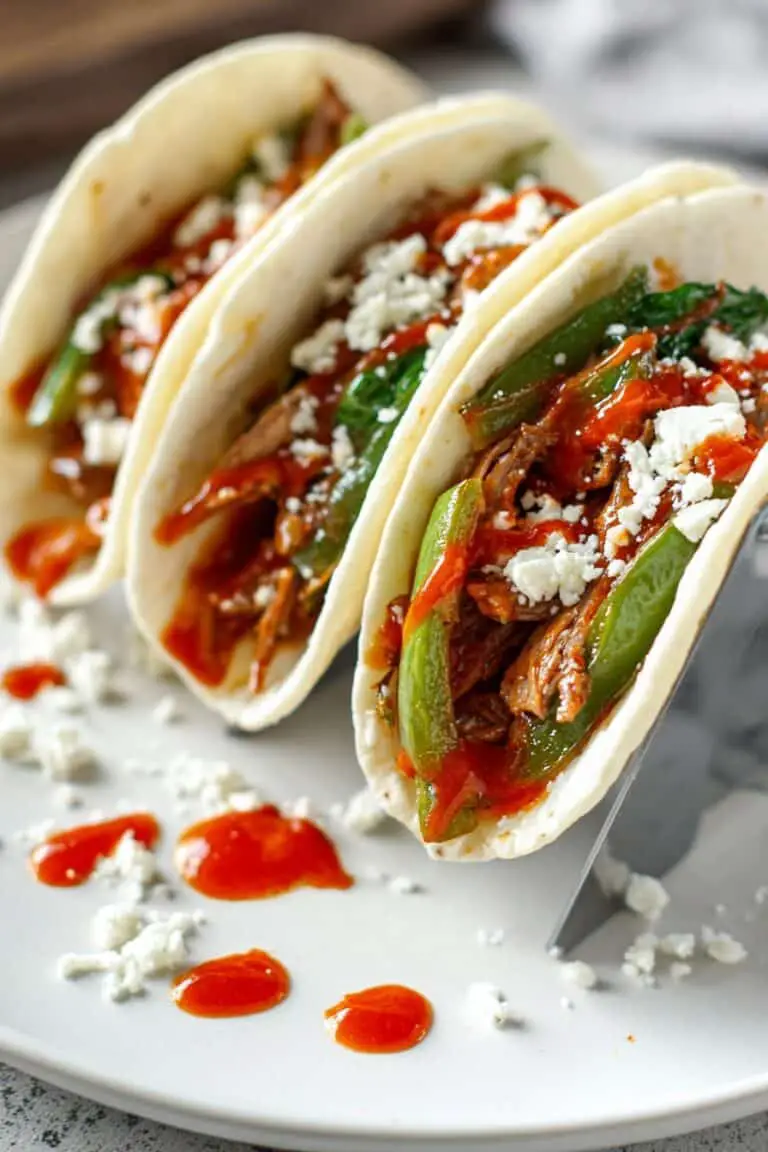If you’ve been curious about turning ordinary turkey into a show-stopping, crispy masterpiece, you’re in for a treat with The Best Fried Turkey Recipe. I absolutely love how this method locks in juicy flavors while delivering that golden, crunchy crust we all dream of at holiday dinners or weekend feasts. Stick with me, and I’ll walk you through everything—from prepping your bird to fry time and tasty tweaks—so you can wow your family (and yourself) without any stress.
Why You’ll Love This Recipe
- Juicy, Flavor-Packed Turkey: The injection marinade infuses the meat deeply, making every bite tender and bursting with flavor.
- Crispy Skin Perfection: That deep-fried magic creates an unbeatable crispy skin that’s impossible to resist.
- Time-Saving Cooking Method: Fried turkey cooks much faster than roasting, freeing up your oven for other dishes.
- Proven Step-by-Step Guidance: I learned a lot through trial and error, and this recipe walks you through avoiding common pitfalls.
Ingredients You’ll Need
Each ingredient plays its part to create that quintessential Southern fried turkey experience. From the peanut oil that crisps the skin beautifully to the combination of spices that wakes up your taste buds—paying attention here will set you up for success.
- Turkey: Choose a large bird under 18 lbs for safety and even cooking.
- Peanut Oil: This has a high smoke point, perfect for frying; plus, it adds a subtle nutty flavor.
- Chili Powder: Adds a gentle, smoky heat without overpowering.
- Paprika: Gives a lovely color and mild peppery taste.
- Garlic Salt: For savory depth in both the marinade and rub.
- Onion Salt: Enhances overall seasoning with a sweet bite.
- Seasoning Salt: Balances all spices, lifting the flavor profile.
- Fresh Ground Pepper: Essential for that peppery punch.
- Melted Butter & Oil: Help the skin brown perfectly and carry flavors.
- Worcestershire Sauce: Brings in umami richness to the injection marinade.
- Water: Balances the injection, keeping the turkey moist.
- Fresh Lemon Juice: Adds bright acidity, complementing the savory spices.
- Ground Sage & Dried Thyme: Classic herbs that add warmth and earthiness.
Variations
I love how flexible The Best Fried Turkey Recipe is to suit your personal flavor preferences. You can easily tweak the spices or try different injections to keep things exciting every time.
- Spicy Kick: I’ve added cayenne pepper to the rub for a fiery twist that my heat-loving gang goes crazy for.
- Herbal Infusion: Sometimes I swap the dried thyme for fresh rosemary and sage to add a garden-fresh aroma.
- Smoky Flavor: Liquid smoke in the injection marinade is a neat trick I discovered to get that subtle BBQ vibe when I’m grilling hot weather vibes.
- Healthier Option: For a lighter version, you can reduce the butter and oil, but keep in mind it might affect crispiness slightly.
How to Make The Best Fried Turkey Recipe
Step 1: Prepare and Inject Your Turkey
Thaw your turkey completely—this step is critical for safety and even cooking. Rinse and pat the bird dry, then mix the injection marinade (butter, oil, Worcestershire, water, lemon juice, and your spices). Using a marinade injector, I like to poke just one hole per section of the bird, then move the needle around as I inject slowly, making sure to spread the flavor inside with as few holes as possible. This technique keeps the bird juicy and packed with flavor deep inside, not just on the surface.
Step 2: Rub and Refrigerate
Next, mix your dry rub spices and massage all over the turkey—don’t forget inside the cavity and gently under the skin where you can. This layering of seasoning is what gives you that complex, savory taste when fried. Wrap the turkey tightly with cling wrap and refrigerate. I’ve learned that the longer it marinates—ideally 24 hours—the better the flavors meld and penetrate. But if you’re short on time, even an hour will kick things up a notch.
Step 3: Oil Preparation and Safety Check
This part takes a little patience but is so worth it for safety and a perfect fry. Before you add oil, fill your pot with water to the first fill line. Place the turkey inside an airtight bag, then submerge it in the water to mark how much space the bird takes up—this helps you avoid oil overflow and dangerous spills once you add the oil. After marking, dry the pot thoroughly, add the peanut oil up to your marked line, and preheat to 275°F while you dry off the turkey one last time.
Step 4: Frying Time
Wearing heat-resistant gloves (trust me, this is crucial!) and using the hanger or hook, lower your turkey gently into the hot oil. Insert your thermometer probe and close the lid to maintain an even temperature. Let the oil heat up to 325°F, then fry until the internal temperature of the turkey measures 165°F in the thickest part of the breast. I usually plan around 3-4 minutes per pound but rely on my thermometer for accuracy. When done, carefully remove the turkey and let it rest for 20-30 minutes before carving to let all those delicious juices redistribute.
Pro Tips for Making The Best Fried Turkey Recipe
- Keep the Turkey Dry: A completely dry bird ensures your oil won’t splatter and that the skin crisps up beautifully.
- Use a High-Quality Thermometer: I can’t stress this enough—checking the internal temp avoids undercooking or overcooking your precious bird.
- Mind Your Oil Temperature: Maintaining 325°F after adding the turkey keeps the cooking steady and skin perfectly crunchy without burning.
- Practice Safety First: I always fry outdoors on a flat surface, away from structures and water, and use heavy gloves and tools to handle the hot bird.
How to Serve The Best Fried Turkey Recipe
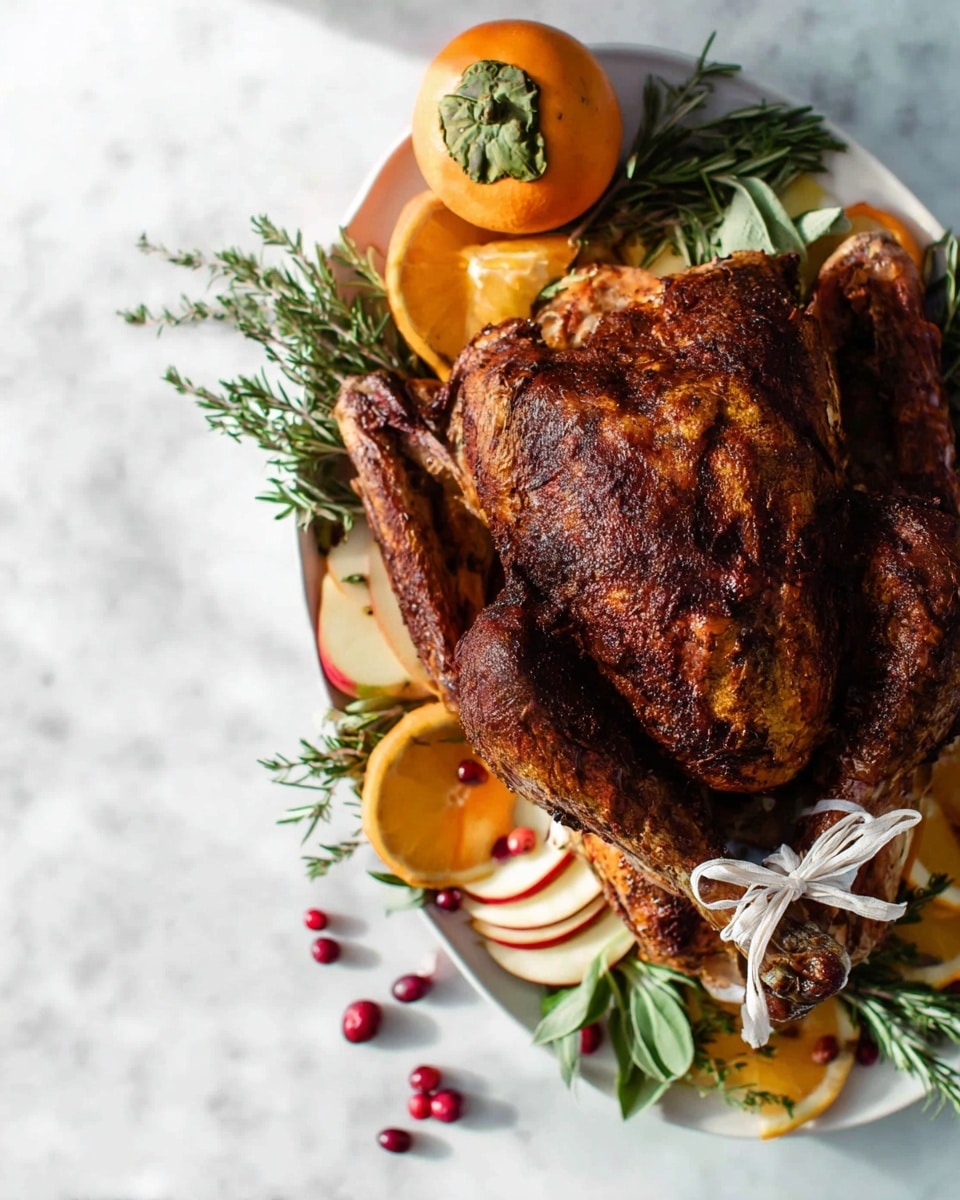
Garnishes
I’m a simple gal when it comes to garnishes: fresh lemon wedges and a scattering of chopped parsley or rosemary add a bright and fresh look—and a little zing when squeezed over. These touches really lift the fried richness without overwhelming the natural turkey flavors.
Side Dishes
My family goes crazy for classic Southern sides alongside this fried turkey—think creamy mashed potatoes, buttery cornbread, collard greens, and tangy coleslaw. These sides balance the richness and keep the meal comforting and hearty.
Creative Ways to Present
For holidays, I like to carve the turkey into thick slices and serve it on a large wooden board with sprigs of fresh herbs and colorful roasted veggies around it—it’s rustic, inviting, and perfect for family-style serving. Setting out bowls of pickled peppers or spicy cranberry sauce also adds contrast and a pop of color.
Make Ahead and Storage
Storing Leftovers
I always wrap leftover fried turkey tightly in foil or a sealed container and store it in the refrigerator. The skin might lose some crispness, but the meat stays juicy. It lasts about 3-4 days, perfect for quick lunches or adding to sandwiches.
Freezing
If I’m planning ahead, I slice leftover turkey and freeze portions in freezer bags with as much air removed as possible. Thaw in the fridge overnight before reheating. This method keeps the meat tasting fresh without drying out.
Reheating
To bring back some crispiness, I reheat turkey slices in a 375°F oven on a wire rack for about 10-15 minutes. This warms the meat through and crisps the skin better than the microwave, which tends to make it soggy.
FAQs
-
What size turkey should I use for frying?
The best size for The Best Fried Turkey Recipe is a bird under 18 pounds. Larger turkeys can be dangerous to fry due to limited pot sizes and oil displacement. Keeping it under 18 lbs ensures even cooking and safer handling.
-
Can I use other oils besides peanut oil?
While peanut oil is preferred for its high smoke point and flavor, you can use other high-heat oils like canola or vegetable oil. Just be sure your oil has a smoke point above 400°F to avoid burning.
-
How long does it take to fry the turkey?
Generally, frying takes about 3-4 minutes per pound once the oil reaches 325°F. But the most reliable method is using a meat thermometer to check for an internal temperature of 165°F in the thickest part of the breast.
-
Is it safe to fry a frozen turkey?
Never fry a frozen or partially frozen turkey! The ice can cause the hot oil to splatter or even boil over, creating a dangerous fire hazard. Always thaw your turkey completely before frying.
Final Thoughts
I can honestly say The Best Fried Turkey Recipe changed the game for me—what used to be a stressful roast has become my signature dish that everyone begs for. The juicy meat, crispy skin, and layers of rich, spiced flavor combine into a meal that’s as festive as it is unforgettable. Give it a try, and I bet it’ll become your go-to turkey recipe, too. Just remember to take your time, respect the process, and enjoy every delicious bite!
Print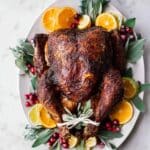
The Best Fried Turkey Recipe
- Prep Time: 1440 min
- Cook Time: 20 min
- Total Time: 1460 min
- Yield: 22 servings
- Category: Main Course
- Method: Frying
- Cuisine: American
Description
Discover the ultimate fried turkey recipe that delivers crispy, juicy, and flavorful results every time. This method involves marinating the bird with a savory injection, seasoning it with a special rub, and frying it at precise temperatures to ensure perfect cooking. Ideal for holiday feasts or special occasions, this recipe guarantees a mouth-watering turkey with a golden, crunchy skin and tender meat.
Ingredients
Turkey
- 1 large turkey (under 18 lbs)
Oil
- 3 gallons peanut oil
- 1/4 cup oil (canola or vegetable)
- 1/4 cup melted butter
Injection Marinade Ingredients
- 3 tbsp Worcestershire sauce
- 1/4 cup water
- 1/2 large lemon (fresh, squeezed)
Rub Spices
- 1 tbsp chili powder
- 1 tbsp paprika
- 1 tbsp garlic salt
- 1 tbsp onion salt
- 1 tbsp seasoning salt
- 1 tsp fresh ground pepper
- 1 tsp ground sage
- 1 tsp dried thyme
- 1 tsp garlic salt (additional)
- 1 tsp onion salt (additional)
Instructions
- Prepare the Turkey: Thaw your turkey completely, then rinse and pat it dry thoroughly to ensure the skin is dry for better seasoning adherence.
- Inject the Marinade: Mix together Worcestershire sauce, water, and freshly squeezed lemon juice to create the injection marinade. Fill a marinade injector syringe with this mixture. Poke one hole in the turkey and inject the marinade into various parts of the turkey by inserting the needle at different angles, distributing the marinade evenly while minimizing the number of holes.
- Apply the Rub: Combine chili powder, paprika, garlic salt, onion salt, seasoning salt, fresh ground pepper, ground sage, dried thyme, plus the additional garlic and onion salts. Rub this spice mixture all over the turkey’s exterior, inside the cavity, and under the skin for maximum flavor penetration.
- Refrigerate: Wrap the seasoned turkey tightly in cling wrap and refrigerate for at least 1 hour and up to 24 hours to allow the flavors to intensify. Longer marinating yields better flavor.
- Prepare Frying Setup: Fill the fryer pot with water up to the desired fill line and place the turkey inside a large airtight bag, then submerge it in the water to measure how much oil will safely cover the turkey without overflowing. Mark this water level on the pot, then empty and dry the pot thoroughly.
- Heat the Oil: Pour peanut oil into the pot up to the marked line and preheat the oil to 275°F (135°C).
- Dry the Turkey: Remove the turkey from the fridge and plastic wrap, then pat it dry again to remove any excess moisture that could cause oil splatter.
- Fry the Turkey: Once the oil reaches 275°F, carefully lower the turkey into the hot oil with the hanger or hook, wearing protective gloves to shield from splashes. Insert a thermometer probe into the turkey and close the fryer lid.
- Increase Heat and Cook: Allow the oil to heat up to 325°F (163°C), and cook the turkey until the internal temperature reaches 165°F (74°C), ensuring it is fully cooked and safe to eat.
- Rest and Serve: Carefully remove the turkey from the oil and let it rest for 20-30 minutes before carving to allow juices to redistribute for moist, tender slices.
Notes
- This is the best fried turkey recipe you will ever taste – crispy, juicy, and bursting with flavor.
- Using an injection marinade ensures the turkey stays moist inside, while the rub gives the perfect crust.
- Make sure the turkey is completely thawed and dry before frying to prevent dangerous oil splatters.
- Always monitor oil temperature closely to avoid undercooked or overcooked meat.
- Wear protective gloves and lower the turkey carefully to prevent burns from hot oil.
- Allow sufficient resting time before carving to keep your turkey juicy.
Nutrition
- Serving Size: 1 serving
- Calories: 211
- Sugar: 1 g
- Sodium: 620 mg
- Fat: 11 g
- Saturated Fat: 3 g
- Unsaturated Fat: 7 g
- Trans Fat: 0 g
- Carbohydrates: 1 g
- Fiber: 1 g
- Protein: 25 g
- Cholesterol: 90 mg

